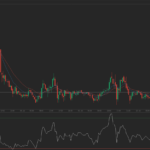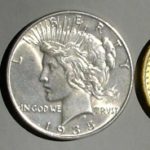Yesterday’s trade (in GMT terms) saw GBP/USD within the range of 1.3060-1.3122. The pair closed at 1.3083, edging down 0.17% compared to Mondays close. It has been the 179th drop in the past 327 trading days and also a fourth consecutive one. The daily low has been an exact test of the low from Monday and also a level unseen since August 22nd, when a low of 1.3034 was registered. The major pair has increased its drop to 1.14% so far during the current month, after losing 0.59% of its value in July.
At 7:12 GMT today GBP/USD was inching up 0.08% on the day to trade at 1.3093. The pair touched a daily high at 1.3118 during the mid phase of the Asian trading session, overshooting the upper range breakout level (R4), and a daily low at 1.3065 during early Asian trade.
On Wednesday GBP/USD trading may be influenced by the following macroeconomic reports and other events as listed below.
Fundamentals
United States
Fed Speakers
At 7:15 GMT the Fed President for Boston and a FOMC member, Eric Rosengren, is expected to take a statement, followed by the Fed President for Minneapolis and also a member to the Committee, Neel Kashkari, at 12:00 GMT. Any remarks in regard to the central bank’s policy stance or the US economic outlook would heighten USD volatility.
Change in employment by the ADP
Employers in the US non-farm private sector probably added 175 000 new jobs during August, according to the median estimate by experts, following 179 000 new positions added in July. The latter has been the highest number of new jobs added since March, when a revised down figure of 194 000 was reported.
Employment in the goods-producing sector dropped by 6 000, while employment in services increased by 185 000 in July. Employment in trade, transportation and utilities grew by 27 000 during the month, in professional and business services – by 59 000 and in financial activities – by 11 000. On the other hand, employment in US construction fell by 6 000, while companies in the sector of manufacturing added 4 000 more positions.
The employment report by Automated Data Processing Inc. (ADP) is based on data that encompasses 400 000 – 500 000 companies employing over 24 million people, working in the 19 major sectors of the economy. The ADP employment change indicator is calculated in accordance with the same methodology, which the Bureau of Labor Statistics (BLS) uses. Published two days ahead of the government’s employment statistics, this report is used by traders as a reliable predictor of the official non-farm payrolls data. Creation of jobs has a direct link to consumer spending, while the latter is a major driving force behind the US economic growth. In case new job growth was slower than expected in August, this would have a moderate-to-strong bearish effect on the US dollar. The official figure is scheduled to be released at 12:15 GMT.
Chicago manufacturing activity barometer
The Chicago Purchasing Managers’ Index (PMI) probably slowed down to a reading of 54.0 in August, according to market expectations, from 55.8 during the prior month. If so, August would be the third consecutive month of activity expansion in the region. In July, the gauges of new orders and production rose at a slower rate, while the sub-index of employment soared to its highest level since March after three successive months of contraction.
The index reflects business conditions in Chicago’s manufacturing sector and is interrelated with the Manufacturing Index, published by the Institute for Supply Management (ISM). A reading above the key level of 50.0 is indicative of optimism (expansion in manufacturing activity). In case the PMI slowed down more than forecast, this would have a moderate bearish effect on the US dollar. The ISM-Chicago Inc. will release the official reading of this barometer at 13:45 GMT.
Pending Home Sales
The index of pending home sales in the United States probably rose 0.6% in July from a month ago, according to the median estimate by experts. In June pending home sales edged up 0.2%, coming well short of market expectations. In June, sales in the Northeast area rose 3.2%, those in the Midwest were 0.8% more, while sales in the South went down 0.6% and those in the West area slumped 1.3%.
In annual terms, contracts to buy previously owned homes in the United States were 1.0% more in June, rebounding after a 0.2% drop in the preceding period. The latter has been the first annual drop since August 2014.
In case pending home sales increased at a faster pace than anticipated in July, this would have a moderate bullish effect on the US dollar. The National Association of Realtor’s (NAR) will report on the official index performance at 14:00 GMT.
Bond Yield Spread
The yield on UK 2-year government bonds went as high as 0.179% on August 30th, after which it closed at 0.162% to lose 0.006 percentage point compared to August 29th.
Meanwhile, the yield on US 2-year government bonds climbed as high as 0.829% on August 30th, after which it fell to 0.801% at the close to lose 0.008 percentage point compared to August 29th.
The spread between 2-year US and 2-year UK bond yields, which reflects the flow of funds in a short term, narrowed to 0.639% on August 30th from 0.641% on August 29th. The August 30th yield spread has been the lowest one since August 25th, when the difference was 0.634%.
Daily, Weekly and Monthly Pivot Levels
By employing the Camarilla calculation method, the daily levels of importance for GBP/USD are presented as follows:
R1 – 1.3089
R2 – 1.3094
R3 (Range Resistance – Sell) – 1.3100
R4 (Long Breakout) – 1.3117
R5 (Breakout Target 1) – 1.3137
R6 (Breakout Target 2) – 1.3145
S1 – 1.3077
S2 – 1.3072
S3 (Range Support – Buy) – 1.3066
S4 (Short Breakout) – 1.3049
S5 (Breakout Target 1) – 1.3029
S6 (Breakout Target 2) – 1.3021
By using the traditional method of calculation, the weekly levels of importance for GBP/USD are presented as follows:
Central Pivot Point – 1.3150
R1 – 1.3267
R2 – 1.3395
R3 – 1.3512
R4 – 1.3628
S1 – 1.3022
S2 – 1.2905
S3 – 1.2777
S4 – 1.2648
In monthly terms, for GBP/USD we have the following pivots:
Central Pivot Point – 1.3171
R1 – 1.3546
R2 – 1.3858
R3 – 1.4233
R4 – 1.4608
S1 – 1.2859
S2 – 1.2484
S3 – 1.2172
S4 – 1.1860





